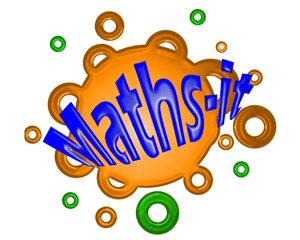Speed is the rate of motion, or equivalently the rate of change of distance.
Speed is a scalar quantity with dimensions length/time; the equivalent vector quantity to speed is velocity. Speed is measured in the same physical units of measurement as velocity, but does not contain the element of direction that velocity has. Speed is thus the magnitude component of velocity.
In mathematical notation, if an object traveling at constant speed moves a distance x in time t, its speed, denoted by v, is simply given by
 .
.
In many situations, objects do not move at a constant speed. For example, if a car goes 120 miles in 4 hours, its average speed during that time is 30 miles per hour, but its instantaneous speed may have varied. For an object which is accelerating or decelerating, the instantaneous speed is given by
 ,
,
where dx is the distance it travels in a very short period of time dt. If the object travels a total distance x in time t, its average speed over that time is given by
 .
.
Want a faster way for learning maths?
The Trachtenberg System is a system of rapid mental calculation, somewhat similar to Vedic mathematics. It was developed by the Ukrainian engineer Jakow Trachtenberg in order to keep his mind occupied while being held in a Nazi concentration camp.
The system consists of a number of readily memorized patterns that allow one to perform arithmetic computations very quickly.
The rest of this article presents some of the methods devised by Trachtenberg. These are for illustration only. To actually learn the method requires practice and a more complete treatment.
The most important algorithms are the ones for general multiplication, division and addition. In addition, the method includes some specialized methods for multiplying small numbers between 5 and 13.
1.What place in this world can have their temperatures Fahrenheit and Celsius equal?This is a maths question!!!!!( hint find the ratio of fahrenheit and celsius)
Questions

Our objectives are :
To encourage independent and creative learning.
To develop skills in sourcing for information and handling of information.
To develop proper discussion skills and think interdependently among group mates.
To show precision of (mathematical) language when doing up the content.
To be able to question and pose problems and respond with wonderment and awe while analyzing fellow classmates' content on the blog.
To show humility, sensitivity, tolerance and appreciation to fellow classmates' sharing on the blog.
To observe copyright issues while creating the blog.
Arithmetic content objectives:
Know the concept of ratio, rate , direct & inverse proportion.
Know the concept of percentages and its applpications ( eg ability to change fractions & decimals to % calculating % of a quantity, expressing one quantity as a % of another, % increase and decrase, profit % loss, discount, taxation, simple interest, compound interest etc)
Know the concepts of speed, uniform speed and average speed.
Know how to convert convert units ( eg km/h to m/s etc.)
Know the concept of simple interest and its formula
Know the concept of compound interest and its formula.
Apply the concept of simple and compound interest on practical situations
Come out with challenging non-routine Arithmetic problems.
Able to connect content with real-world situations.
Able to infuse National Education into the content.

What is Maths?
That is what we learn everyday in school.
No matter if its whole numbers, algebra or whatsoever.
Here I am gonna show you the definations of maths.
(From http://en.wikipedia.org/wiki/Mathematics)
Mathematics is the study of quantity, structure, space, change, and related topics of pattern and form. Mathematicians seek out patterns whether found in numbers, space, natural science, computers, imaginary abstractions, or elsewhere. Mathematicians formulate new conjectures and establish their truth by rigorous deduction from appropriately chosen axioms and definitions. The mathematician Benjamin Peirce called mathematics "the science that draws necessary conclusions". However, Albert Einstein stated that "as far as the laws of mathematics refer to reality, they are not certain; and as far as they are certain, they do not refer to reality."
Through the use of abstraction and logical reasoning, mathematics evolved from counting, calculation, measurement, and the systematic study of the shapes and motions of physical objects. Knowledge and use of basic mathematics have always been an inherent and integral part of individual and group life. Refinements of the basic ideas are visible in mathematical texts originating in the ancient Egyptian, Mesopotamian, Indian, Chinese, Greek and Islamic worlds. Rigorous arguments first appeared in Greek mathematics, most notably in Euclid's Elements. The development continued in fitful bursts until the Renaissance period of the 16th century, when mathematical innovations interacted with new scientific discoveries, leading to an acceleration in research that continues to the present day.
Today, mathematics is used throughout the world as an essential tool in many fields, including natural science, engineering, medicine, and the social sciences such as economics and psychology. Applied mathematics, the branch of mathematics concerned with application of mathematical knowledge to other fields, inspires and makes use of new mathematical discoveries and sometimes leads to the development of entirely new disciplines. Mathematicians also engage in pure mathematics, or mathematics for its own sake, without having any application in mind, although practical applications for what began as pure mathematics are often discovered later.





